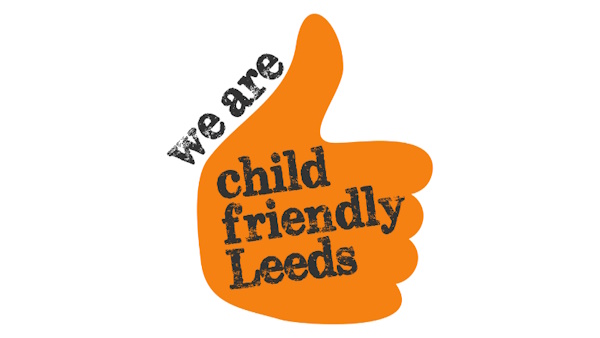What we mean by domestic abuse in young people’s relationships
The government definition of domestic violence and abuse changed in 2013 to include young people aged 16 and 17, extending the definition increased awareness that young people in this age group experience domestic violence and abuse, and encouraged more young people to come forward and access support. However, younger children can also be affected. When talking about young people involved in abusive relationships, the term used is 'Interpersonal Violence and Abuse' (IPVA).
Young people who are be abusive in their own intimate relationships are more likely to have experienced difficulties in their childhood, including emotional, physical and sexual abuse.
Rather than use the term 'perpetrator' a better term to use would be 'young person causing harm'. Young people causing harm have the capacity to change and shouldn't be defined by an episode of abusive behaviour. Practitioners should have ongoing conversations with them about what a healthy relationship looks like and challenge stereotypes.
Research indicates that young people are more dismissive of IPVA than adults and often see it as 'part and parcel' of having a partner. In 2020 in Leeds, 18,372 incidents of domestic abuse were reported to the Police; 211 of these involved 16 and 17 year olds in relationships or who were ex-partners. The Safe Lives charity has a knowledge hub on their website which brings together a range of documents and resources about IPVA relating to young people, including a policy report which includes further relevant data.
Practitioners should avoid making the assumption that age automatically makes a young person more resilient and less likely to suffer harm. Practitioners should also be aware of the possible long term impact of interpersonal violence and abuse. All children and young people under the age of 18 years experiencing violence or abuse are likely to be at risk of significant harm and usual safeguarding procedures apply.
Which young people are affected by IPVA
IPVA can any affect any young people regardless of age, gender identification, sexual orientation, race, religion or disability. However some young people are more vulnerable to IPVA victimisation and instigation including those who:
- have a history of running away from home or care
- are in care or are care leavers
- have disengaged from education, employment or training
- are sexually exploited
- are users of drugs and alcohol
- have a history of domestic abuse in their families
- are involved in gangs, offending or anti-social behaviour
- live independently, with limited or no support
- were neglected in childhood or received punitive parenting
- are young parents or pregnant young people
Examples of IPVA and the signs
Examples of IPVA in young people's relationships include: physical - throwing objects, hitting, slapping, and pulling hair; sexual - making someone do sexual acts they don't want to; emotional - telling someone how to dress, how to do make up, putting pressure on them to send nude photos; financial - controlling someone's money, taking their benefits, allowance or wages; and abuse through technology - harassing or stalking someone through the internet or phone such as tracking their location or sharing pictures of them online without their consent.
Practitioners need to recognise signs which indicate emotional and behavioural changes in young people and may indicate IPVA such as: becoming more self-critical – having no self-belief in how they look, dress or act; giving up their own opinions – thinking their partner is always right; problems eating or sleeping or having headaches; seeming to be scared of their partner's reactions; becoming more isolated - seeing less of their families and friends and not going to school or college; and physical signs of harm such as bruising and scratches. Practitioners should look out for signs of coercive control, post-relationship violence and child sexual exploitation.
What practitioners should do
Young people are more likely to disclose IPVA where they have a trusting and open relationship with a worker. Practitioners should have ongoing conversations about what a healthy relationship looks like.
Where IPVA is disclosed or a practitioner identifies it is happening, it should be discussed with the young person away from the person causing harm. If it appears that a young person is being harmed in this way, the practitioner should discuss the concerns with their agency safeguarding lead, and with the MARAC Coordinator (see contact details below). A recommendation may be to refer the case to the Daily Domestic Violence Meeting. This may result in a referral to the Multi-Agency Risk Assessment Conference (MARAC).
If a young person under the age of 18 is identified at risk of significant harm, a contact should be made to the Duty and Advice Team who will advise on the next course of action, including whether a referral to Children's Social Work Service is needed. If a young person causing harm is displaying harmful sexual behaviours, contact should be made with Duty and Advice Team.
In addition, specialist trained domestic violence practitioners such as Independent DomesticViolence Advocates could develop safety plans with young people to inform any other plans in place (e.g. early help, Child in Need, Child Protection). Safety plans focus on risks the young person is facing, their physical and emotional needs and equipping them to make choices that may keep them safe from serious harm.
Key contacts and more information
If it is believed that a young person under the age of 18 is at risk of significant harm, practitioners can contact Duty and Advice on 0113 376 0336 or the emergency duty team (EDT) on 0113 535 0600. Members of the public can ring the contact centre on 0113 222 4403.
MARAC Coordinator: leedsmarac@westyorkshire.pnn.police.uk.
Spotlight #3 – Young People and domestic abuse.
Government campaign 'Disrespect Nobody'.
The Leeds Domestic Violence and Abuse website includes a range of other One Minute Guides available on the subject of domestic violence and abuse.
Printable version
